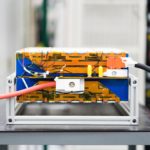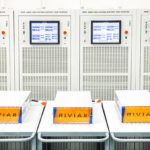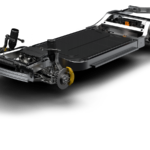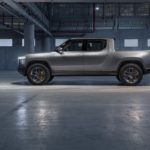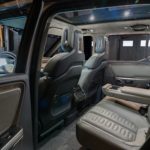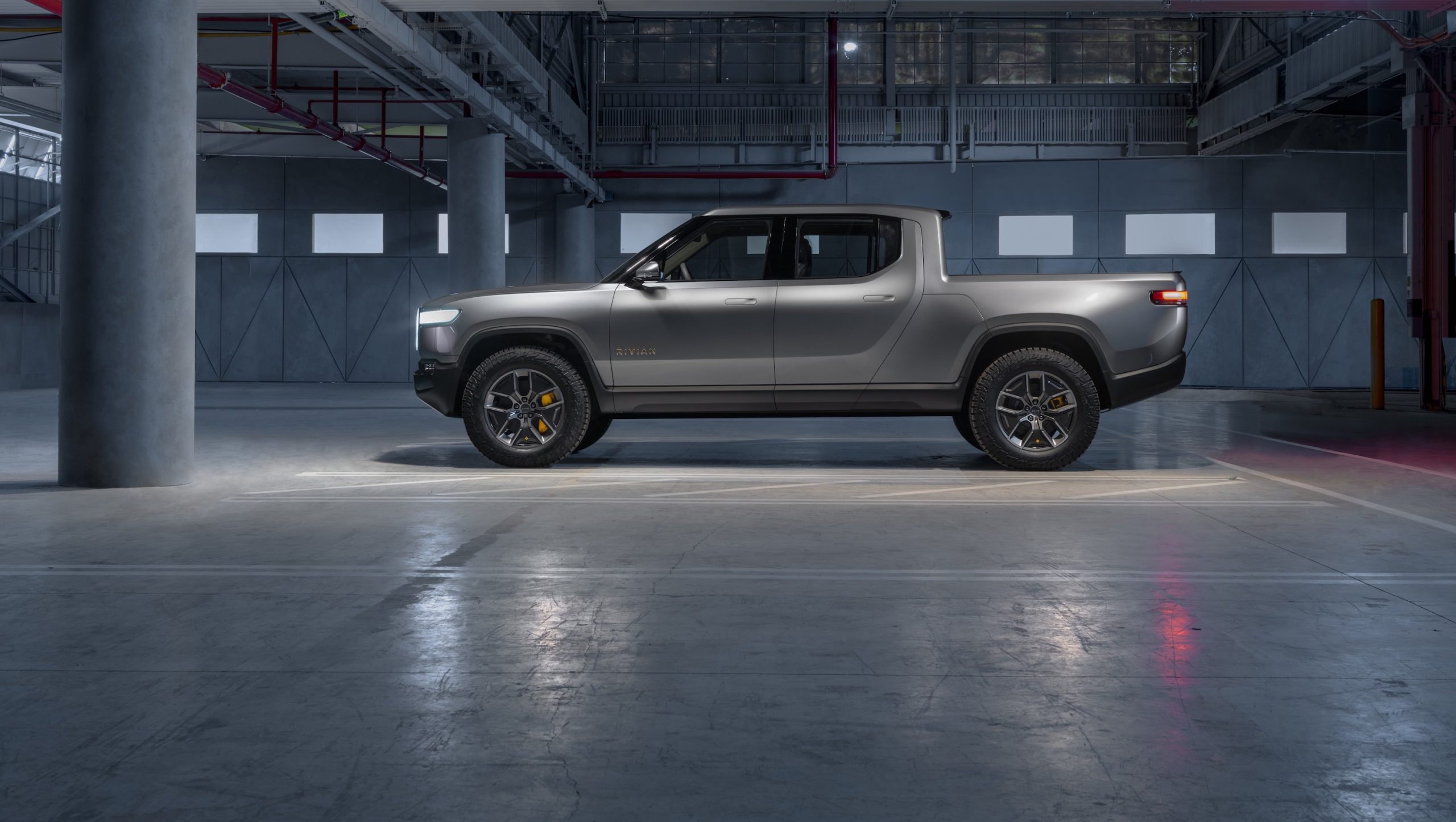
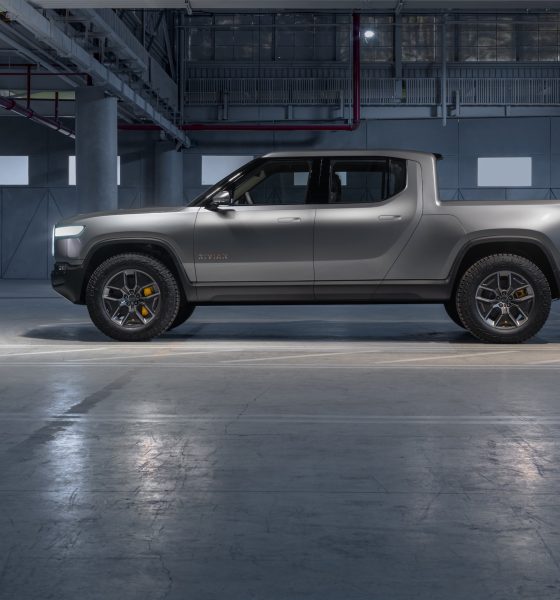
News
Inside Rivian’s California battery lab: 180 kWh ‘megapacks’, carbon fiber, and ballistic shields
I found myself perplexed when I heard about Rivian’s plan to unveil an all-electric pickup truck with a battery pack nearly double the size of any other electric vehicle. Packing 80% more energy than Tesla’s flagship Model S and Model X, Rivian’s 180 kWh battery pack enables their full-size, adventure vehicles to travel 400+ miles (643 km) on a single charge. Rivian’s response? We actually call it the “megapack.”
At a flashy unveiling event in Los Angeles, the Michigan-based electric car company exited stealth mode and debuted their first two production vehicles: an all-electric pickup truck dubbed the R1T and an R1S luxury SUV. Capable of towing 11,000 lbs from its all-electric powertrain, the R1T is set to disrupt a $95-billion-dollar US truck market that’s largely dominated by Ford and GM. Rivian’s seven-seater, R1S SUV takes aim directly at gas guzzlers that are competing in the premium sports utility segment like Land Rover and Porsche’s Cayenne.
Powering the R1T Truck and R1S SUV is a quad-motor electric drivetrain that’s paired with one of Rivian’s three battery pack configurations, in 105 kWh, 135 kWh, and 180 kWh (the “megapack”). Rivian’s 180 kWh megapack holds enough energy to power a typical US household for more than two weeks. To learn more about the engineering that goes into each of Rivian’s battery packs, and the company’s plan to bring their ultra-long-range battery packs to market, I visited their research and development facility in Southern California.
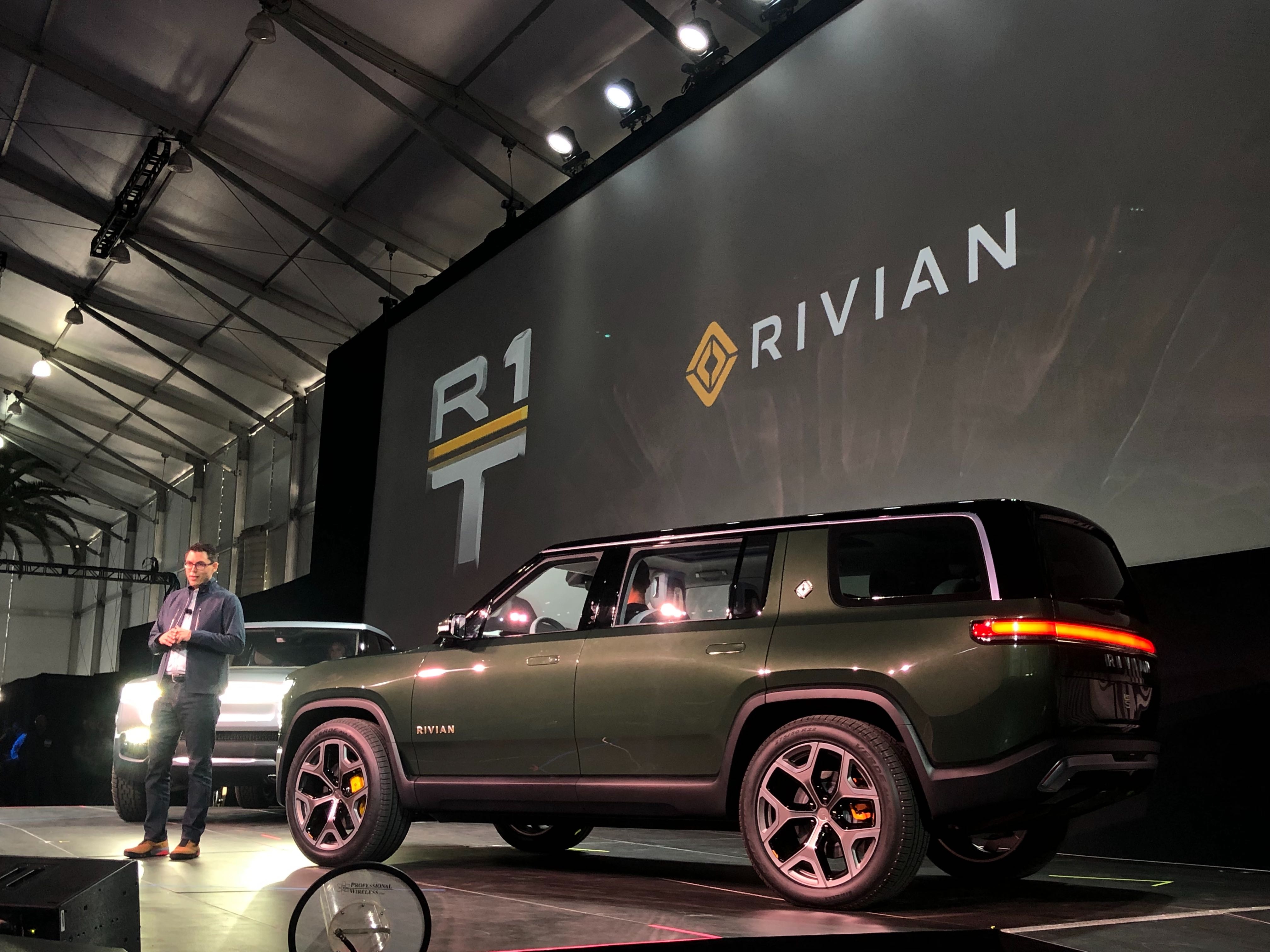
The Battery Lab
Rivian’s battery lab is located in an unassuming industrial business park in Irvine, California. Still working its way out of nine-years in stealth mode, the 19,000 sq ft facility lacks any signage on its doors, yet has played a major role since mid-2017 when the company moved in to begin its research and development.
Upon entering the battery lab, I was greeted by the faint hum of testing equipment around me. Bright white lights illuminate a team of engineers in blue Rivian lab coats. I was told that the lab is where Rivian performs tests on the lithium-ion battery cells being used in its vehicles. The lab is also where battery module production is currently taking place, albeit mostly for prototype battery packs.
Leading Rivian’s battery and powertrain development is former hypercar engineer Richard Farquhar, who enjoys an insanely fun-sounding title: VP of Propulsion. Farquhar is one of the many members to recently join Rivian from renowned supercar brand McLaren. Rivian has brought on seven executives from the British company since late 2017, including Executive Director of Engineering and Programs, Mark Vinnels.
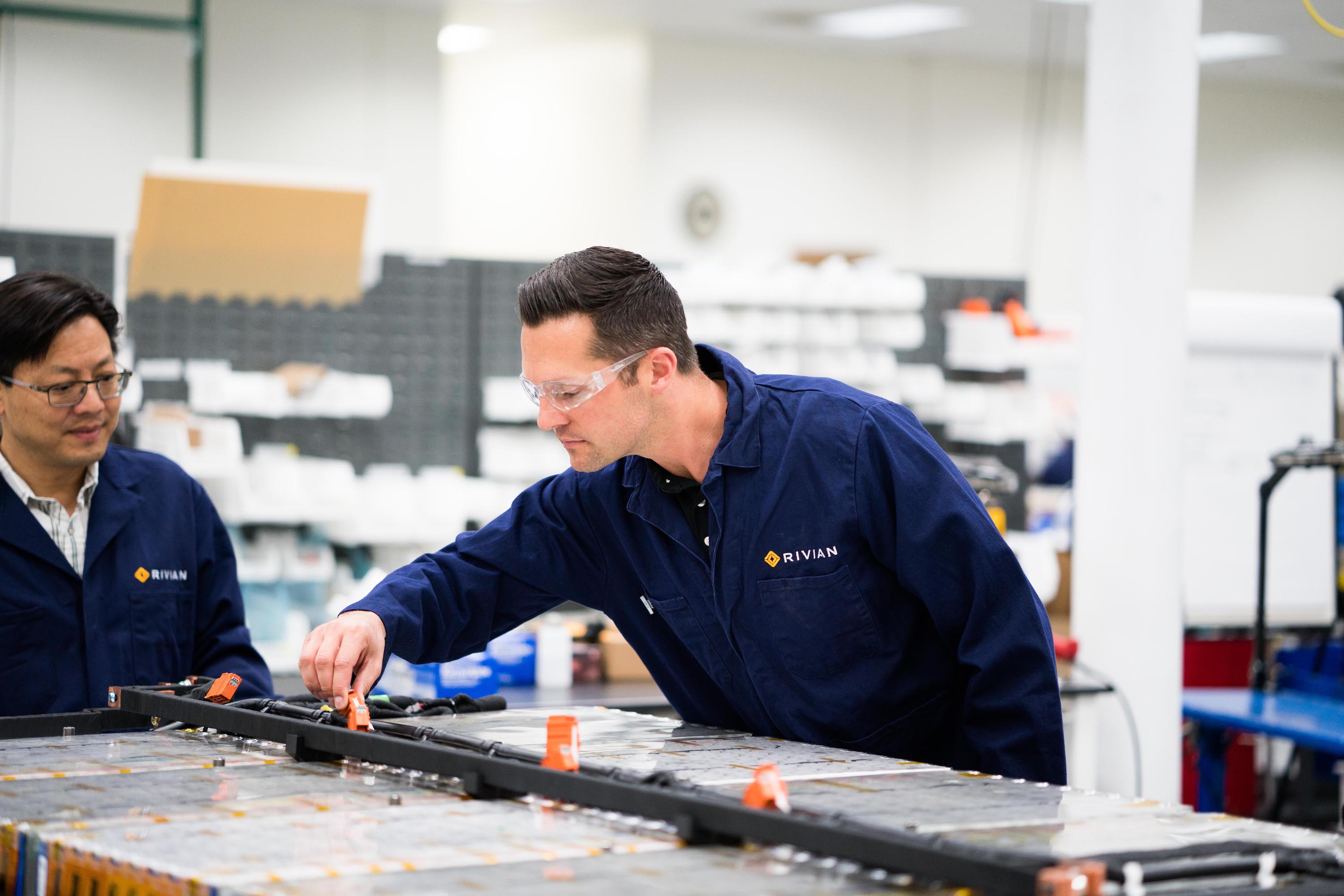 (Photo: Rivian)
(Photo: Rivian)
Rivian’s Battery Cells and Supplier
As Farquhar and I walk past a long row of glass cabinets, seen packed with hundreds of cylindrical battery cells in their testing phase, his eyes lit up with excitement while discussing the most intricate elements of the lithium-ion cells. “We want to understand the battery cells even better than their manufacturer,” Farquhar tells me.
It was the perfect segue I was looking for. “So, where is Rivian getting these battery cells from?” I ask. Farquhar wasn’t able to share the name of their battery partner but emphasized that Rivian wasn’t worried about their supply of cells. “I have no concern whatsoever,” Farquhar emphatically stated.
While Rivian isn’t ready to announce a battery supplier (yet), U.S. customs import records suggest that the company could be partnering with LG Chem to procure their cylindrical 2170 form factor lithium-ion cells. Rivian imported nearly 12,933 kg (28,500 lbs) of the 2170 cells from LG Chem in 2018 thus far — enough to support a test production run of ~195 Rivian battery modules at 15 kWh each.
Designed for extreme conditions
Inside the cabinets were cells being cycled through various charge and discharge states, and at various temperatures. Rivian wants to be the leading experts on battery technology, and in lieu of having numerous vehicles on the road, the company is testing its batteries using real-world simulations.
In the office area next to the lab, engineers analyze the testing data in real-time while adjusting computer-generated models. These tests aren’t just being done for a few hours or days, Farquhar tells me. One battery test has been ongoing for 11 months and counting. Rivian plans to analyze battery cell behavior over time and collect as much data as possible before making adjustments to it and entering production.

While standing the test of time is incredibly important for all battery cells, standing up to extreme conditions is just as critical. On one side of the lab, special climate-controlled containers simulate extreme temperature scenarios and test how the cells, modules, and full-sized battery packs react to these conditions. Rivian expects their adventure-ready vehicles to be capable of handling extreme temperatures and climates. Pushing their batteries to the limit isn’t just a precaution, but a necessity.
From Battery Cells to Modules
Farquhar tells me that Rivian engineers have worked on battery algorithms that leverage a driver’s profile, including their location and navigation data, and real-time weather conditions, to preemptively optimize a battery. For example, when a vehicle is on its way to a DC-charging station, the battery modules will be cooled ahead of time and prepared to accept the fastest charging rate. In essence, Rivian’s battery algorithms are adjusting battery cell settings, constantly, on the fly. By using machine-learning to build predictive models of various conditions, Rivian is able to tune battery cells, with high confidence, on conditions it may encounter.
Rivian’s R1T pickup truck and R1S adventure SUV will use the exact same battery modules. Battery capacity will vary based on the number of modules inside a skateboard-style battery pack design. Each Rivian module holds 864 cells, with 432 on the bottom and the other half stacked on top. In between the cells is a thin 7mm aluminum plate with liquid coolant. The unique structure isn’t known to be used by any other manufacturer.
- A side view of Rivian’s battery module. Between the two layers of battery cells lies a proprietary cooling plate, allowing cells to be packed in tightly, while cooling the module efficiently. (Photo: Rivian)
- Rivian Battery modules being tested in Rivian’s Irvine, CA Development Center (Photo: Rivian)
A battery’s cooling system is one of the most important components within an electric car. If the batteries get too hot from fast charging or extended periods of high output, they could degrade in energy capacity and face permanent damage. If the batteries get too cold, they lose range. Keeping the batteries at their optimum temperature is a constant battle and is what truly differentiates any electric vehicle manufacturer.
Rivian’s solution to battery thermal management is the use of a cold plate that’s placed between two battery cells. A single cooling system chills both layers of cells at the same time. According to Rivian, this reduces the amount of energy needed to power the system, thereby allowing the car to have better range in all types of conditions. In addition to saving power, the cooling system’s design allows for tighter packaging of cells within the modules. According to Farquhar, Rivian’s unique packaging allows the module to be 25% denser than any other battery module on the market.
Rivian’s Battery Pack: Carbon Fiber and Ballistic Shields
I saw it from afar. Carbon fiber. Walking toward a station that was outfitted with Rivian’s line of 135 kWh and 180 kWh battery packs, my eyes were immediately drawn to a fibrous-looking cover plate.
Securing Rivian’s battery modules and high-voltage cabling in place is a carbon-fiber composite shell. Engineers were able to create a unique, high-strength geometric shape out of the carbon fiber while keeping weight to a minimum. Rivian seals the battery pack to be completely watertight. The pack is bolted into the frame of the vehicle and then covered by a smooth ‘ballistic shield’, which prevents damage to the underside of the battery pack and protects occupants within the vehicle’s cabin. The ballistic shield is fitted to the entire underbody of the vehicle.

Having a watertight battery pack that’s armored by a ballistic shield bodes well for a company whose mission is to build extreme off-road vehicles. That’s the messaging Rivian wants consumers to see. The vehicles are designed to be adventure-ready, being able to wade through 1 meter of water, climb 45-degree inclines, and drive over boulders.
Rivian’s Executive Director of Engineering and Programs, Mark Vinnels, told Teslarati that they dropped the vehicle on a boulder from 2 ft in the air, just to be able to verify the battery pack’s integrity in extreme off-road situations.
What about Production?
With the design of its battery module completed, a significant portion of the team’s focus has turned to module production — specifically, designing methods to quickly and efficiently manufacture modules by using automation. Rivian has set up a pilot production line at the Irvine facility, ahead of its anticipated summer 2020 production.

Rivian is actively developing automation processes for the entire battery module assembly. In a corner of the battery facility were two Japan-made robots that were brought in from the company’s massive factory in Normal, Illinois. A robotics technician was actively working on the robots, while I watched a module come together on the line.
The entirety of Rivian’s module and battery pack production is slated to be installed in a 300,000 sq-ft section of Rivian’s 2.6M sq ft factory in Normal, IL. The plant was acquired by Rivian in 2017 for $16M and originally part of an expansion made by Mitsubishi that the Japanese automaker never occupied. Farquhar stated that the area is virtually a “clean slate.”
ALSO SEE: Rivian R1T and R1S: Top 10 hidden features that make an electric off-road vehicle
Rivian expects to start deliveries of the R1S and R1T in the second half of 2020, with the largest battery packs entering production first. The R1S SUV starts at $72,500 (before tax credits) and has a range that varies between 240 to 410+ miles (385 to 660 km). Rivian’s R1T pickup truck has a starting price of $69,000 and similar range as the R1S at 230 to 400+ miles (370 to 643 km), depending on battery pack size. Both vehicles will support CCS DC-fast charging up to 160 kW and are capable of accelerating from 0-60 mph in 3 seconds.
Rivian is accepting preorders at its website.
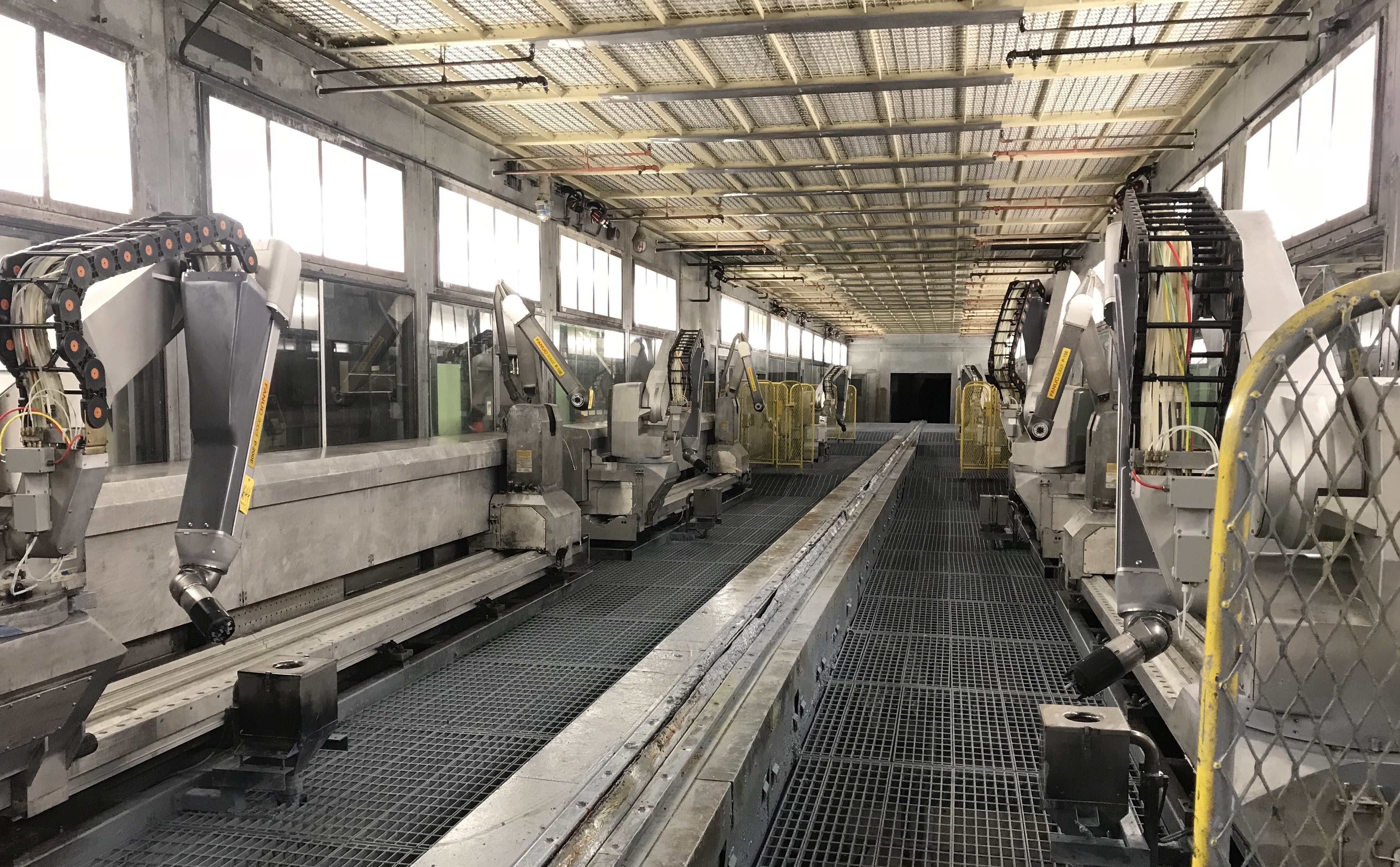

News
Tesla starts showing how FSD will change lives in Europe
Local officials tested the system on narrow country roads and were impressed by FSD’s smooth, human-like driving, with some calling the service a game-changer for everyday life in areas that are far from urban centers.

Tesla has launched Europe’s first public shuttle service using Full Self-Driving (Supervised) in the rural Eifelkreis Bitburg-Prüm region of Germany, demonstrating how the technology can restore independence and mobility for people who struggle with limited transport options.
Local officials tested the system on narrow country roads and were impressed by FSD’s smooth, human-like driving, with some calling the service a game-changer for everyday life in areas that are far from urban centers.
Officials see real impact on rural residents
Arzfeld Mayor Johannes Kuhl and District Administrator Andreas Kruppert personally tested the Tesla shuttle service. This allowed them to see just how well FSD navigated winding lanes and rural roads confidently. Kruppert said, “Autonomous driving sounds like science fiction to many, but we simply see here that it works totally well in rural regions too.” Kuhl, for his part, also noted that FSD “feels like a very experienced driver.”
The pilot complements the area’s “Citizen Bus” program, which provides on-demand rides for elderly residents who can no longer drive themselves. Tesla Europe shared a video of a demonstration of the service, highlighting how FSD gives people their freedom back, even in places where public transport is not as prevalent.
What the Ministry for Economic Affairs and Transport says
Rhineland-Palatinate’s Minister Daniela Schmitt supported the project, praising the collaboration that made this “first of its kind in Europe” possible. As per the ministry, the rural rollout for the service shows FSD’s potential beyond major cities, and it delivers tangible benefits like grocery runs, doctor visits, and social connections for isolated residents.
“Reliable and flexible mobility is especially vital in rural areas. With the launch of a shuttle service using self-driving vehicles (FSD supervised) by Tesla in the Eifelkreis Bitburg-Prüm, an innovative pilot project is now getting underway that complements local community bus services. It is the first project of its kind in Europe.
“The result is a real gain for rural mobility: greater accessibility, more flexibility and tangible benefits for everyday life. A strong signal for innovation, cooperation and future-oriented mobility beyond urban centers,” the ministry wrote in a LinkedIn post.
News
Tesla China quietly posts Robotaxi-related job listing
Tesla China is currently seeking a Low Voltage Electrical Engineer to work on circuit board design for the company’s autonomous vehicles.

Tesla has posted a new job listing in Shanghai explicitly tied to its Robotaxi program, fueling speculation that the company is preparing to launch its dedicated autonomous ride-hailing service in China.
As noted in the listing, Tesla China is currently seeking a Low Voltage Electrical Engineer to work on circuit board design for the company’s autonomous vehicles.
Robotaxi-specific role
The listing, which was shared on social media platform X by industry watcher @tslaming, suggested that Tesla China is looking to fill the role urgently. The job listing itself specifically mentions that the person hired for the role will be working on the Low Voltage Hardware team, which would design the circuit boards that would serve as the nervous system of the Robotaxi.
Key tasks for the role, as indicated in the job listing, include collaboration with PCB layout, firmware, mechanical, program management, and validation teams, among other responsibilities. The role is based in Shanghai.
China Robotaxi launch
China represents a massive potential market for robotaxis, with its dense urban centers and supportive policies in select cities. Tesla has limited permission to roll out FSD in the country, though despite this, its vehicles have been hailed as among the best in the market when it comes to autonomous features. So far, at least, it appears that China supports Tesla’s FSD and Robotaxi rollout.
This was hinted at in November, when Tesla brought the Cybercab to the 8th China International Import Expo (CIIE) in Shanghai, marking the first time that the autonomous two-seater was brought to the Asia-Pacific region. The vehicle, despite not having a release date in China, received a significant amount of interest among the event’s attendees.
Elon Musk
Elon Musk and Tesla AI Director share insights after empty driver seat Robotaxi rides
The executives’ unoccupied tests hint at the rapid progress of Tesla’s unsupervised Robotaxi efforts.

Tesla CEO Elon Musk and AI Director Ashok Elluswamy celebrated Christmas Eve by sharing personal experiences with Robotaxi vehicles that had no safety monitor or occupant in the driver’s seat. Musk described the system’s “perfect driving” around Austin, while Elluswamy posted video from the back seat, calling it “an amazing experience.”
The executives’ unoccupied tests hint at the rapid progress of Tesla’s unsupervised Robotaxi efforts.
Elon and Ashok’s firsthand Robotaxi insights
Prior to Musk and the Tesla AI Director’s posts, sightings of unmanned Teslas navigating public roads were widely shared on social media. One such vehicle was spotted in Austin, Texas, which Elon Musk acknowleged by stating that “Testing is underway with no occupants in the car.”
Based on his Christmas Eve post, Musk seemed to have tested an unmanned Tesla himself. “A Tesla with no safety monitor in the car and me sitting in the passenger seat took me all around Austin on Sunday with perfect driving,” Musk wrote in his post.
Elluswamy responded with a 2-minute video showing himself in the rear of an unmanned Tesla. The video featured the vehicle’s empty front seats, as well as its smooth handling through real-world traffic. He captioned his video with the words, “It’s an amazing experience!”
Towards Unsupervised operations
During an xAI Hackathon earlier this month, Elon Musk mentioned that Tesla owed be removing Safety Monitors from its Robotaxis in Austin in just three weeks. “Unsupervised is pretty much solved at this point. So there will be Tesla Robotaxis operating in Austin with no one in them. Not even anyone in the passenger seat in about three weeks,” he said. Musk echoed similar estimates at the 2025 Annual Shareholder Meeting and the Q3 2025 earnings call.
Considering the insights that were posted Musk and Elluswamy, it does appear that Tesla is working hard towards operating its Robotaxis with no safety monitors. This is quite impressive considering that the service was launched just earlier this year.
